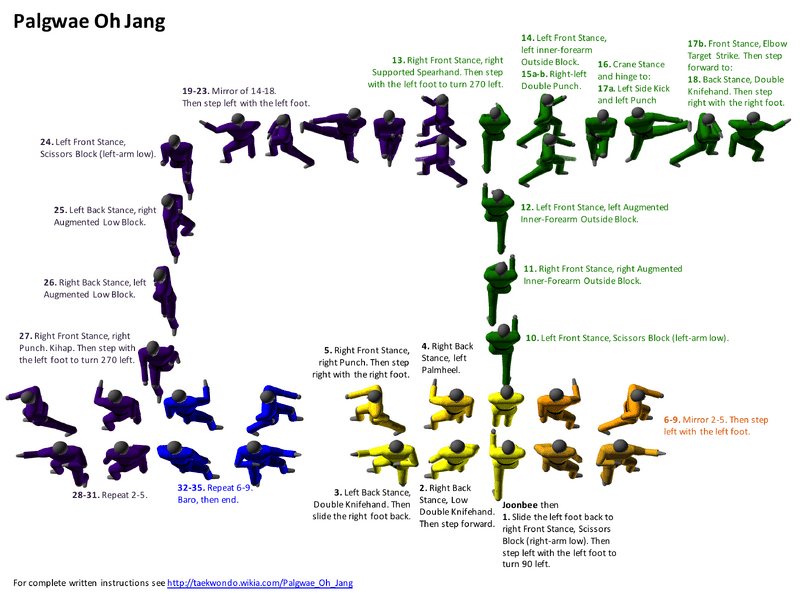Early terminology in Korean Karate included some Japanese terms as I understand it...Correct, but in Japanese - not Korean.
The Korean words for Kara (depending on the hanja used) are Kong or Tang.
Sent from my Nexus 6P using Tapatalk
Early terminology in Korean Karate included some Japanese terms as I understand it...Correct, but in Japanese - not Korean.
The Korean words for Kara (depending on the hanja used) are Kong or Tang.
Anyway, your chart is in English, and I'm trying to find the Korean terms....
This spelling (and if you pronounce it like that) is definitely incorrect! In Korean it's 막기 which would be romanised as mak-gi, your version would be 마기 which would be more like "smashing", "hitting", "crushing", "breaking".
I just checked my study guide, and It's actually spelled Mahki. So, is it the the g/k that makes the difference or the hyphen? Keep in mind, my GM is not Korean, so the mistake is surely unintentional.
I just checked my study guide, and It's actually spelled Mahki. So, is it the the g/k that makes the difference or the hyphen? Keep in mind, my GM is not Korean, so the mistake is surely unintentional.
(By the way...an anonymous editor did a global edit on the Wikipedia page the other day for taekwondo, converting all the taekwondo into taekwon-do, arguing that this was the original spelling. Because, ya know...all those Koreans back then wrote in 'merican!)
One nitpick: the blocks we're talking about aren't really low and high, they're low and mid-height. But I know the blocks you're talking about.

Steps 25 and 26. Most often I see those called Augmented Low Blocks (kodureo arae makgi).
You can find names for all the techniques for all the Taegeuk/Palgwae/Yudanja forms on the wiki. Palgwae Oh Jang (I diagram the forms using Poomsae Designer as I learn them...which is why the Chang Hon forms probably won't ever get diagrammed by me...maybe someday some ITF-type will tackle that project!)
I just checked my study guide, and It's actually spelled Mahki. So, is it the the g/k that makes the difference or the hyphen? Keep in mind, my GM is not Korean, so the mistake is surely unintentional.
Hangul (Korean alphabet) doesn't make a distinction between a g and a soft k (I'm not sure if that's a real linguistic term, lol, but think abou). They're the same letter, ㄱ. Same with r/l, f/p, and b/v. Hangul has a lot more vowels and a lot fewer consonants than the Latin alphabet, which is why you often see so many different "English" spellings for the same Korean word.
No. It just means blade. 요철날 would mean serrated edge/blade. To check my proof, click on me.I heard once in-passing that "nal" didn't just mean blade generically, but that it refers to a specific kind of blade? Is that true? I tried Googling to figure it out, but no success.
The phonics is 'yeop ero muckgi' (옆에로 막기) .No, not X- block. We call that Yeot Pero Mahki.
An example of what I'm talking about is found in Palgwe O-jang. After the initial scissors block, you turn to the left and do a double knife-hand low, followed by a double knife-hand high (Sonnol arae/momtong mahki). The blocks I'm talking about are the same except they have a closed fist. They come later in the form.
After turning toward the front, you do another scissors block followed by double-fist high (in long stance) twice. Later, after turning toward the rear, yet another scissors block followed by double-fist low (back stance) twice.